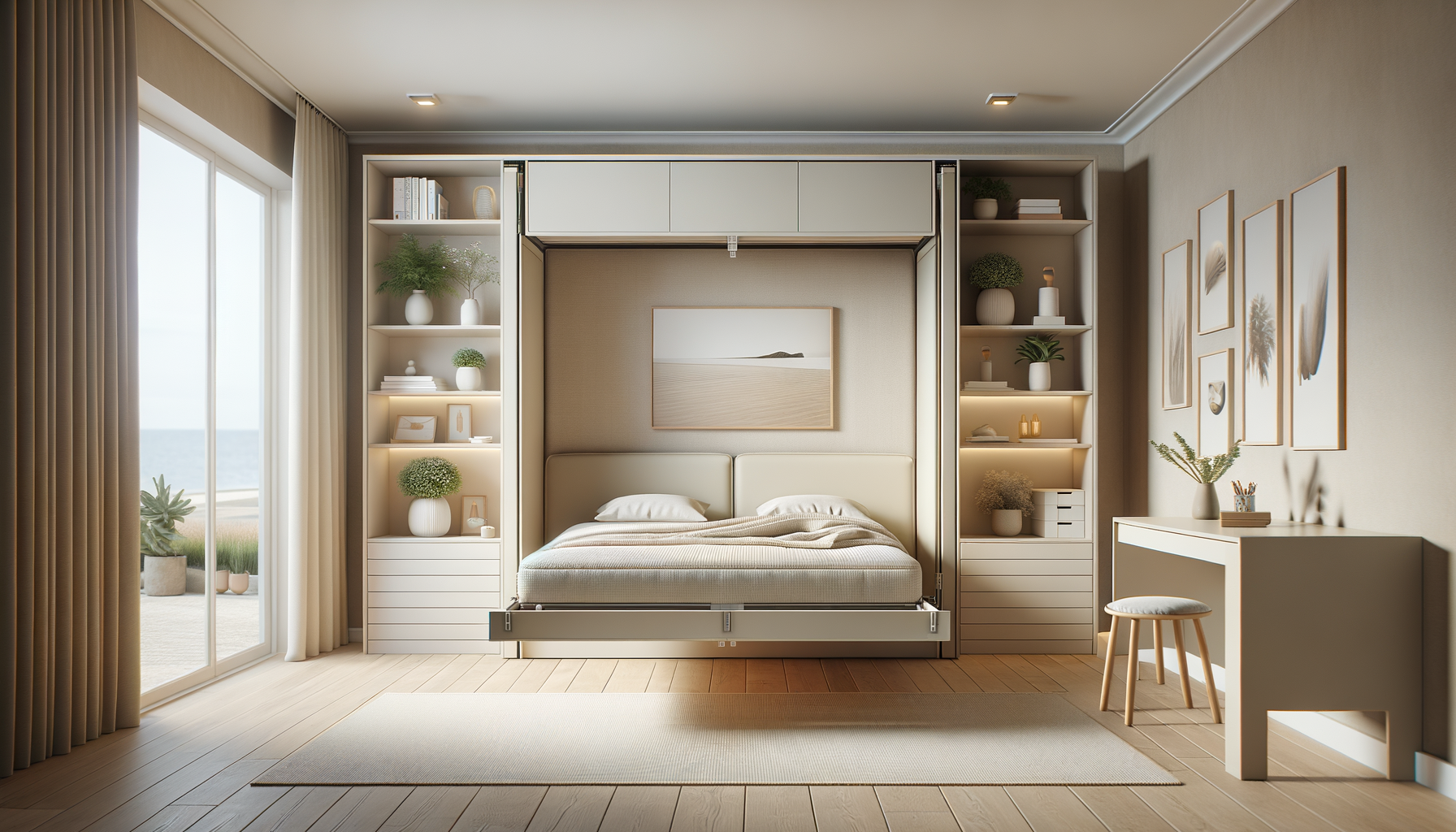Understanding the Murphy Bed: A Historical Perspective
The Murphy bed, also known as a wall bed, has a fascinating history that dates back to the early 20th century. Invented by William Lawrence Murphy, the concept was born out of necessity in a small San Francisco apartment. Murphy wanted to entertain guests without sacrificing space, leading to the creation of a bed that could be folded into a closet. This ingenious design quickly gained popularity, especially in urban areas where space was at a premium.
As the decades passed, the Murphy bed evolved in both design and functionality. Early models were simple, focusing primarily on the folding mechanism. However, as technology advanced, so did the features of Murphy beds. Today, they are not just practical but also stylish, often incorporating additional elements like sofas, desks, or shelving units. This evolution reflects broader trends in interior design, where multifunctionality and space optimization are highly valued.
Murphy beds are particularly relevant in modern times as urban living spaces become increasingly compact. They offer a practical solution for studio apartments, guest rooms, and home offices, allowing for a seamless transition between sleeping and living areas. By understanding the historical development of Murphy beds, one can appreciate their enduring appeal and adaptability to changing lifestyle needs.
The Mechanics Behind Murphy Beds: How They Work
The functionality of Murphy beds lies in their unique folding mechanism, which allows the bed to be stored vertically against a wall or inside a cabinet. This mechanism is typically supported by either a spring or piston lift system. Spring systems use coiled springs to counterbalance the weight of the bed, making it easier to lift and lower. Piston systems, on the other hand, employ gas cylinders to achieve the same effect, often providing a smoother and quieter operation.
Installation of a Murphy bed requires careful consideration of the available space and wall structure. Most models are designed to be anchored to the wall for stability, ensuring that the bed remains secure when folded up or down. This anchoring process is crucial, as it prevents the bed from tipping over or causing damage to the wall.
In addition to the basic folding mechanism, many Murphy beds come with integrated features that enhance their usability. For instance, some models include built-in lighting, USB charging ports, and even adjustable headrests. These features add to the convenience of a Murphy bed, making it not just a space-saving solution but also a comfortable and functional piece of furniture.
Understanding the mechanics of Murphy beds can help potential buyers make informed decisions about which model best suits their needs. Whether opting for a simple design or a more elaborate setup with additional features, the key is to ensure that the bed is both functional and safe for everyday use.
Design Variations: Customizing Your Murphy Bed
One of the most appealing aspects of Murphy beds is their versatility in design. Modern Murphy beds are available in a wide range of styles, materials, and finishes, allowing homeowners to customize them to match their interior decor. From sleek, minimalist designs to more traditional wooden finishes, there is a Murphy bed to suit every taste and preference.
Customization options extend beyond aesthetics. Many manufacturers offer the ability to incorporate additional furniture elements into the Murphy bed design. For example, a Murphy bed can be combined with a sofa, providing a comfortable seating area during the day. Alternatively, it can include a desk, transforming a bedroom into a functional home office when the bed is not in use.
For those looking to maximize storage space, Murphy beds can also be equipped with built-in shelves or cabinets. These additions provide extra room for storing bedding, books, or personal items, further enhancing the practicality of the bed. This level of customization ensures that a Murphy bed can meet the specific needs of any household, making it a truly adaptable piece of furniture.
When considering a Murphy bed, it’s important to think about how it will integrate with the existing layout and style of the room. By choosing a design that complements the space, homeowners can enjoy the benefits of a Murphy bed without sacrificing aesthetics or functionality.
Comparing Murphy Beds to Traditional Beds
When evaluating the benefits of Murphy beds, it’s essential to compare them with traditional beds to understand their unique advantages. One of the most significant differences is the space-saving capability of Murphy beds. Unlike traditional beds, which occupy a fixed space, Murphy beds can be folded away, freeing up valuable floor space during the day.
This feature is particularly beneficial in small apartments or multi-purpose rooms where maximizing space is a priority. For instance, a Murphy bed in a studio apartment can transform the living area into a bedroom at night and revert to a living space during the day. This flexibility is something traditional beds cannot offer.
Another advantage of Murphy beds is their multifunctionality. Many models come with additional features like desks or sofas, which are not typically found in traditional beds. This integration of multiple functions makes Murphy beds an attractive option for those looking to optimize their living spaces.
However, it’s important to consider the potential downsides as well. Murphy beds often require more complex installation and may not be suitable for all wall types. Additionally, the initial cost of a Murphy bed can be higher than that of a traditional bed, although the long-term benefits often justify the investment.
In conclusion, while traditional beds remain a popular choice for many, Murphy beds offer distinct advantages for those seeking to maximize space and functionality in their homes. By carefully weighing the pros and cons, homeowners can determine which option best suits their needs and lifestyle.
Choosing the Right Murphy Bed for Your Space
Selecting the right Murphy bed involves several considerations to ensure it meets both practical and aesthetic needs. The first step is to assess the available space and determine the size of the bed that will fit comfortably in the room. Murphy beds come in various sizes, from twin to king, so it’s important to choose one that aligns with the room’s dimensions.
Next, consider the style and design of the Murphy bed. As previously mentioned, these beds are available in a wide array of finishes and materials, allowing for customization to match the room’s decor. Whether opting for a modern, sleek look or a more traditional aesthetic, the design should complement the overall style of the home.
Functionality is another crucial factor. Determine whether additional features like a desk, sofa, or storage are necessary. These features can enhance the utility of the Murphy bed, making it a more versatile piece of furniture.
Finally, consider the budget. While Murphy beds can be more expensive than traditional beds, they offer long-term value by saving space and providing multifunctional benefits. It’s important to balance cost with the features and quality of the bed to ensure it meets both immediate and future needs.
In summary, choosing the right Murphy bed requires careful consideration of space, design, functionality, and budget. By taking these factors into account, homeowners can find a Murphy bed that not only fits their space but also enhances their living environment.




Leave a Reply